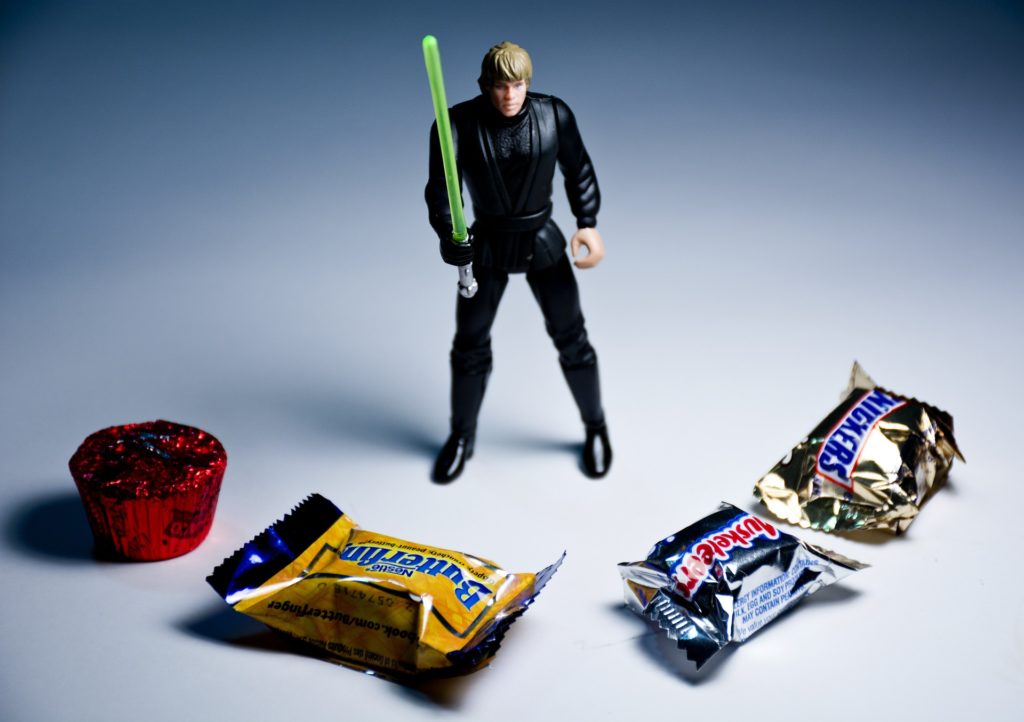
We know that we can use our brain’s love of habits to our advantage when we are planning to make healthy changes in our lives. When we succeed in turning a change into a habit, our brain creates new pathways and doesn’t have to think as hard about it. Initially it takes conscious decision making and repetition, but as time goes on it gets increasingly easy until it becomes routine. That’s the goal – to make our new healthy change into a routine.
In addition to making new healthy habits many of us also have old bad habits that we would like to get rid of. A lot of the same principles apply, however there are differences.
Preparation is the key. Before you start you need to work out what the circumstances are when your bad habit usually happens. The best idea is to keep a diary for a week or two to figure out your trouble areas, and then you are better placed to figure out your strategies for dealing with it.

For example if you wanted to cut down on unhealthy snacks, you could first need to figure out the circumstances in which you are eating them and how you were feeling at the time.
For example Joe kept a diary for a week. This allowed him to see patterns. On several occasions he ate cake/sweets at the end of the morning just before lunch – they had been left out by colleagues for everyone to share in the room he was working in, he’d managed to resist them all morning but by lunch time he was hungry and his will-power let him down. He bought chocolate bars from the vending machine at work just as he was leaving at 5pm, again he was hungry and had run out of willpower. When he was working late, there were chocolates available to share again and by 8 or 9 in the evening, although he’s had his dinner and wasn’t hungry he was working hard and really felt he deserved them. In the evenings he was having a chocolate bar with his cup of tea.
Now you know your areas of weakness you need to make your strategy for each one of them
Replacing a bad habit with a better one is easier for your brain than just stopping a bad habit and not replacing it. In Joe’s case he could think about replacing his unhealthy snack with a healthier option, which he could bring to work with him so it was available.
We’ve previously talked about will-power and we know that although useful for short periods, our ability to be self-controlled is limited so it’s best to use will-power as little as possible. So strategies that minimise the use of will-power are best.

-Joe could help himself by thinking about how he could make it harder to give in to the habit he wants to get rid off. He could move any cakes into another area, so they’re out of sight. He could stop bringing change to work with him so he can’t use the vending machine.
-As with forming new habits, he can remind himself that getting rid of his old bad habit will get easier as time goes on and his brain sets up new pathways for his new good habit instead, and why he wants to get rid of his old habit.
-He could reward himself if he successfully managed to stop his old habit and stick with his new replacement habit for a certain period of time.
-He could use accountability, support from family and colleagues who may stop bring cakes into work, or stop inviting Joe to share them. Even better he could find someone who wants to get rid of the same bad habit to provide support for each other.
-He could change the associated environment – if he associates having a cup of tea with eating a cake he could try changing to drinking herbal tea instead. He could make sure there is not chocolate in the house to reduce the temptation of eating it.
-If he realizes during this process that his old bad habit is associated with stress, he may want to think about taking steps to try and reduce his stress level.
-He needs to know that it won’t always go according to plan, just because he messed up once doesn’t mean that he’s back to square one. He needs to take a careful look at the circumstances and review his strategies for that particular obstacle.

It will take time and effort and determination but the beauty of the brain is that it has what’s called neuroplasticity – it can change throughout our lives. Just because we do what we do at the moment doesn’t mean we’re stuck doing it forever. New pathways can be formed to take over from old ones.
©Ayearofsmallchanges 2019
2 replies to "How to Break a Bad Habit"
Thanks again Izzy. All very motivational. Hope to form new habits this year … new good ones that is
Mary
Thanks again Izzy. All very motivational. Hope to form new habits this year … new good ones that is
Mary